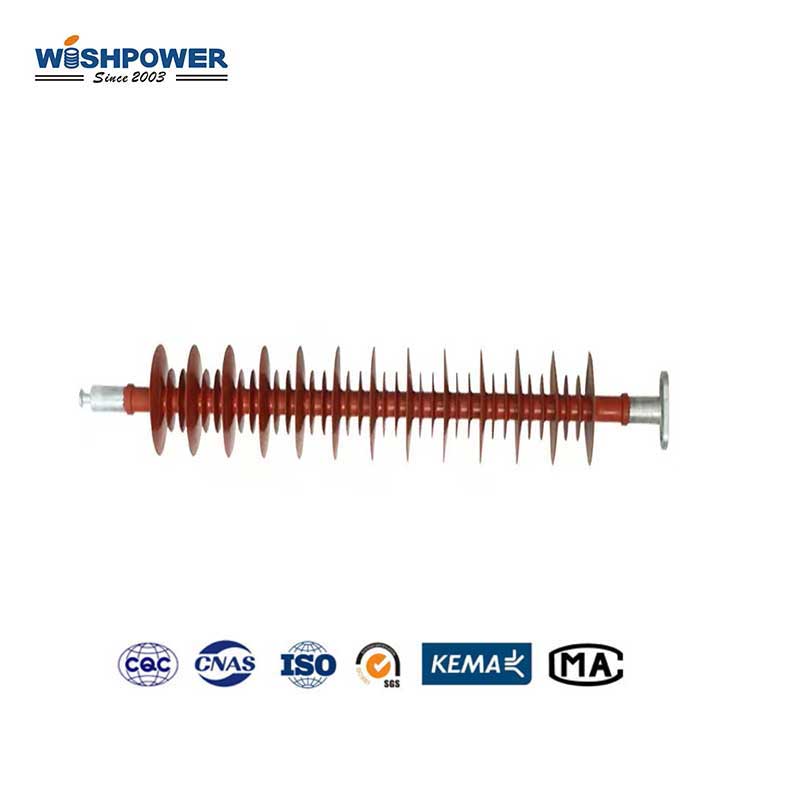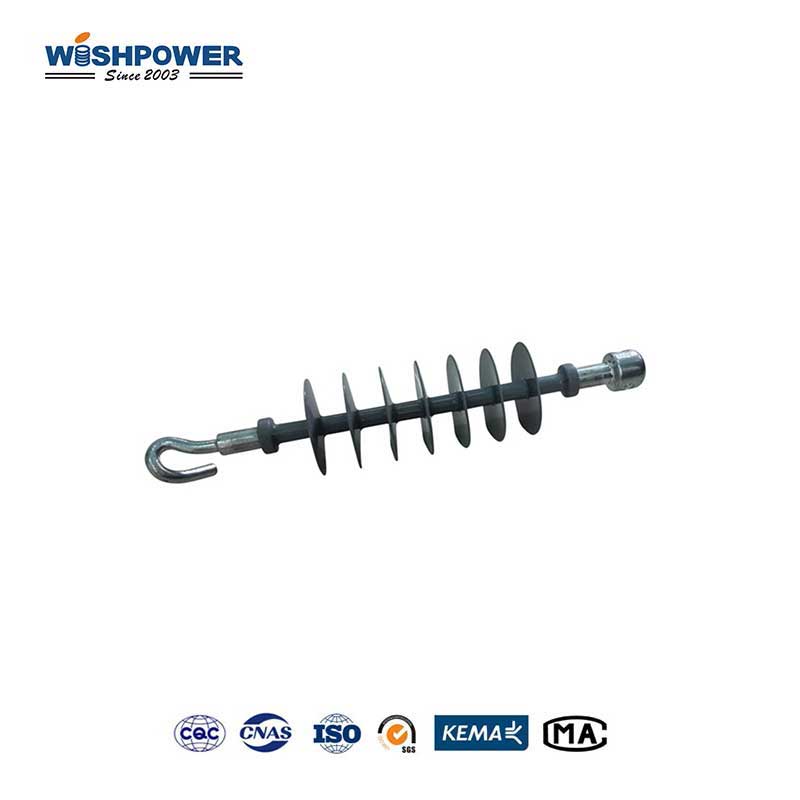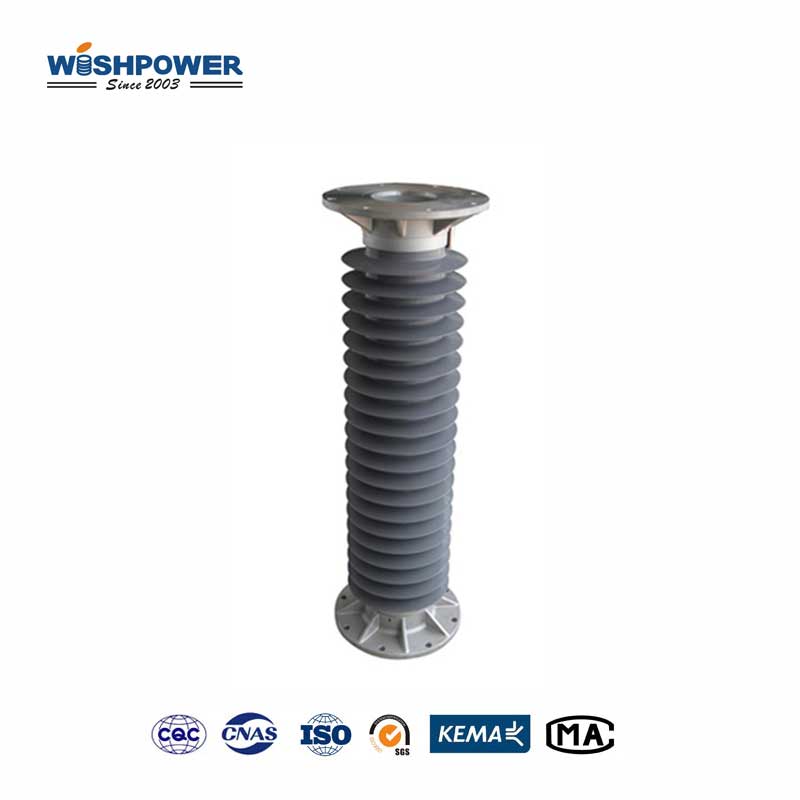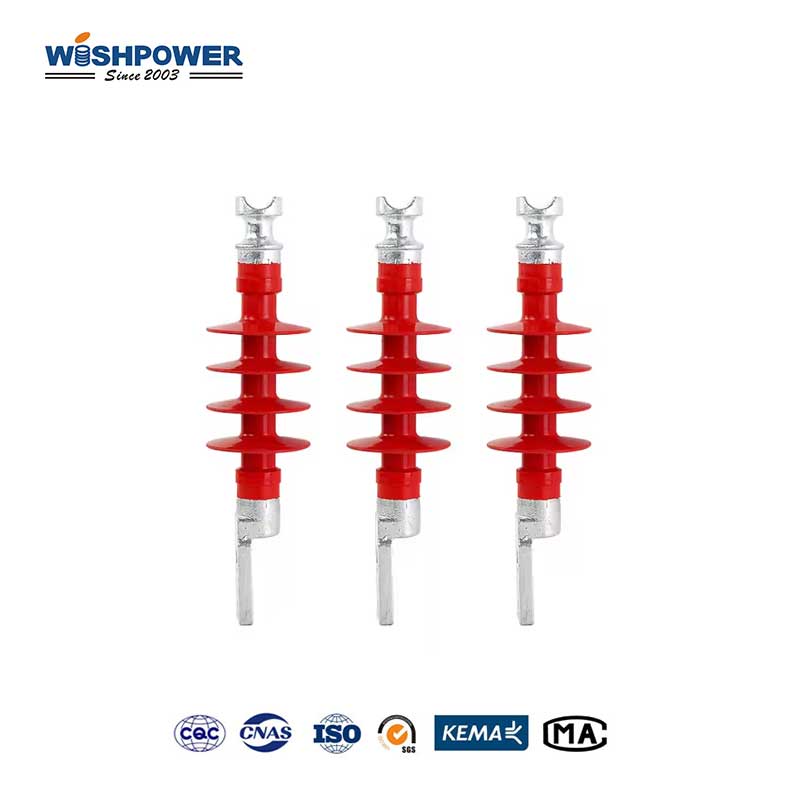Specification
| Type of Insulator |
FK-110(126)/(8/12.5) |
FK-36/(1/3/5) |
FK-66/10 |
FK-12/(1/3/5) |
FK-24/(1/3/5) |
| Specified Voltage |
110/126 kV |
36 kV |
66 kV |
12 kV |
24 kV |
| Specified Bending Withstanc Load |
8/12.5 kN |
1(3/5) kN |
10 kN |
1/3/5 kN |
1/3/5 kN |
| Section Length |
1350 mm |
210 mm |
984 mm |
138 mm |
190 mm |
| Min. Arcing Distance |
≥1070 mm |
≥190 mm |
≥704 mm |
≥106 mm |
≥147 mm |
| Tube Inner Diameter |
115 mm |
115 mm |
115 mm |
70 mm |
100 mm |
| Big Shed Diameter |
284 mm |
204 mm |
284 mm |
160 mm |
170 mm |
| Min. Nominal Creepage Distance |
4370 mm |
720 mm |
2900 mm |
248 mm |
480 mm |
| Lightning Impulse Withstand Voltage(Peak Value) |
≥550 kV |
≥110 kV |
≥325 kV |
≥72 kV |
≥81 kV |
| Power Frequency Withstand Voltage Min.Wet(RMS) |
≥245 kV |
≥46 kV |
≥140 kV |
≥24 kV |
≥34 kV |
| Reference Weight |
50 kg |
2.8 kg |
18 kg |
1.6 kg |
2.2 kg |
The table above is just one of our product parameters. If you want more information, please get in touch with info@wishpower.net
What is the Composite Insulator?
The composite insulator is a modern electrical insulator in the overhead power line, which is a fiberglass core with a covering of polymer material, such as silicone rubber. These insulators are intended to replace standard ceramic or glass insulators with the advantages of toughness, performance, and ease of installation. The high modulus fiberglass core gives excellent mechanical strength, and the high environmental stress resistance provided by the polymer housing is obtained. This avoids waste while at the same time reducing the load on structures and making handling and installation quicker. Not only do they have superior hydrophobic properties that preserve a water and contaminant barrier, preventing the undesirable flashover commonly associated with high voltage systems, but they are most notably capable of being installed at relatively low levels. These insulators also have a higher resistance to impact and vandalism and are less likely to shatter than ceramic insulators. A combination of advanced materials and innovative engineering makes them key components in modern power systems in regions where high reliability is needed, or in extreme environmental conditions.

Market Trends
The growing requirement for reliable power transmission infrastructure together with the shift towards more sustainable energy solutions has greatly boosted the demand for the composite polymer insulators market. Global energy consumption and the expansion of power grids have accelerated their adoption as a favored alternative to traditional ceramic or glass insulators. Given their ability to provide a superior lightweight construction, resistance to pollution, and lower maintenance requirements they have become very attractive for utilities wishing to improve the efficiency and modernize their transmission systems. The growth of this market has also been facilitated by technological advancements in materials and the manufacturing processes in newer designs, which bring with them more enhanced durability, reduced risk of flashover, and increase in mechanical strength. The market for composite insulators is set to continue its upward trend as power utilities and infrastructure developers look to make grids more resilient and sustainable, with the rise of global clean energy and island nations striving to modernize aging electrical infrastructure.
Are composite insulators the same as polymer insulators?
In many contexts, composite-type insulators and polymer insulators are treated as the same, as both refer to modern insulators that are made from nonceramic materials usually from a mixture of a fiberglass core and polymer housing (eg. silicone rubber). Yet the two terms differ slightly. As such, polymer insulator focuses on the use of polymeric material for the external housing, while composite insulator is based on a composite structure comprised of multiple materials provided that the structure includes a core of fiberglass-reinforced material and a polymer outer layer. In practice, these types of insulators tend to be used interchangeably, as both types are engineered to provide similar performance in high voltage power transmission; particularly lightweight construction, good resistance to environmental degradation, and better performance in contaminated conditions. However, composite and polymer insulators have common key characteristics such as hydrophobicity, resistance to flashover, and superior mechanical strength, and so are generally very similar in terms of the industry. While the slightly different technical focus for some may suggest their difference, for the vast majority of applicatory cases they may be considered as the same class of insulator.
Why choose Wishpower to buy composite insulators?
- Established In 2003
We have been in the electrical industry for over 30 years, now serving with Wishpower. Since our establishment in 2003, we have a strong foundation and a reputation for delivering high-quality products with years of experience and technical know-how.
- China and Thailand Manufacturing Presence
Our factories are in China and Thailand, so we can optimize production efficiency and fulfill the needs of global markets. But because we have a dual manufacturing base, our supply chain is reliable and we can hit our orders easily and consistently.
- Insulating Materials from Trusted Partner, Taporel Electrical
Our insulators are made with premium-grade material from Taporel Electrical our sister company. By working this closely together we can manufacture our composite insulators with the very best quality materials to give the best performance and durability.
- Rigorous Mechanical and Electrical Testing is followed.
Each composite insulator before leaving our factories is strictly tested mechanically and electrically. As a result, the quality control of this process is very thorough and guarantees the products are up to an industry standard and work reliably when used in real life.
About Wishpower
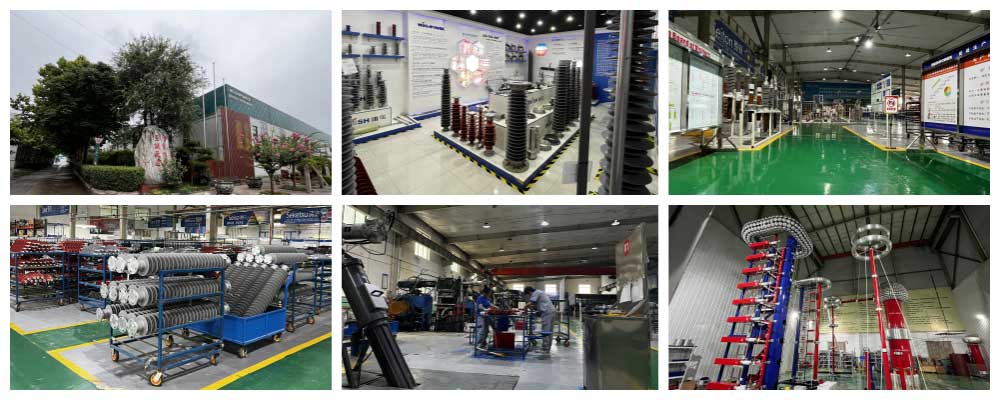
Certificate
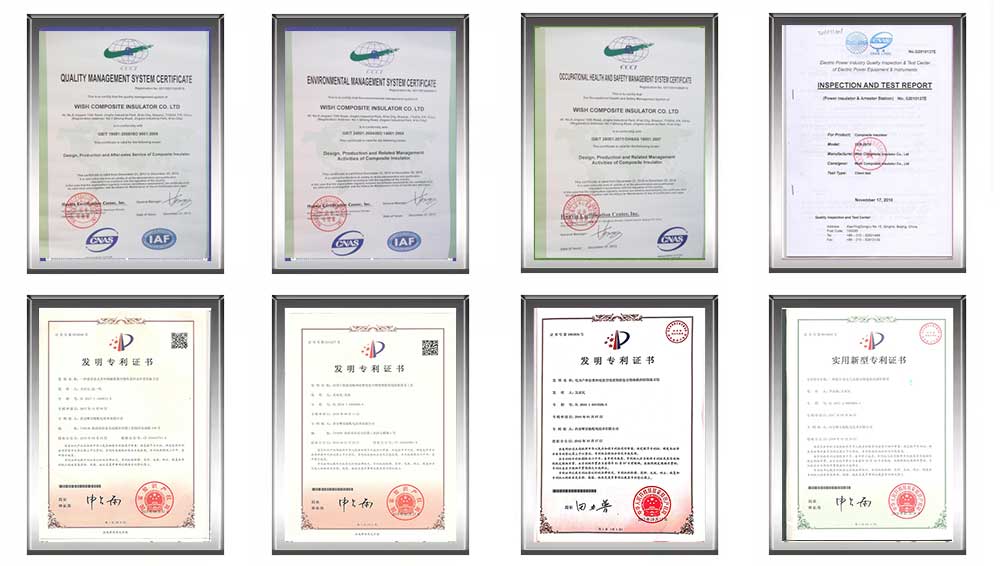
Hot Tags: Composite Insulator, Composite Insulator, China, Thailand, manufacturers, ISO factory, wholesale, KEMA, high quantity, best, price, low to high voltage







